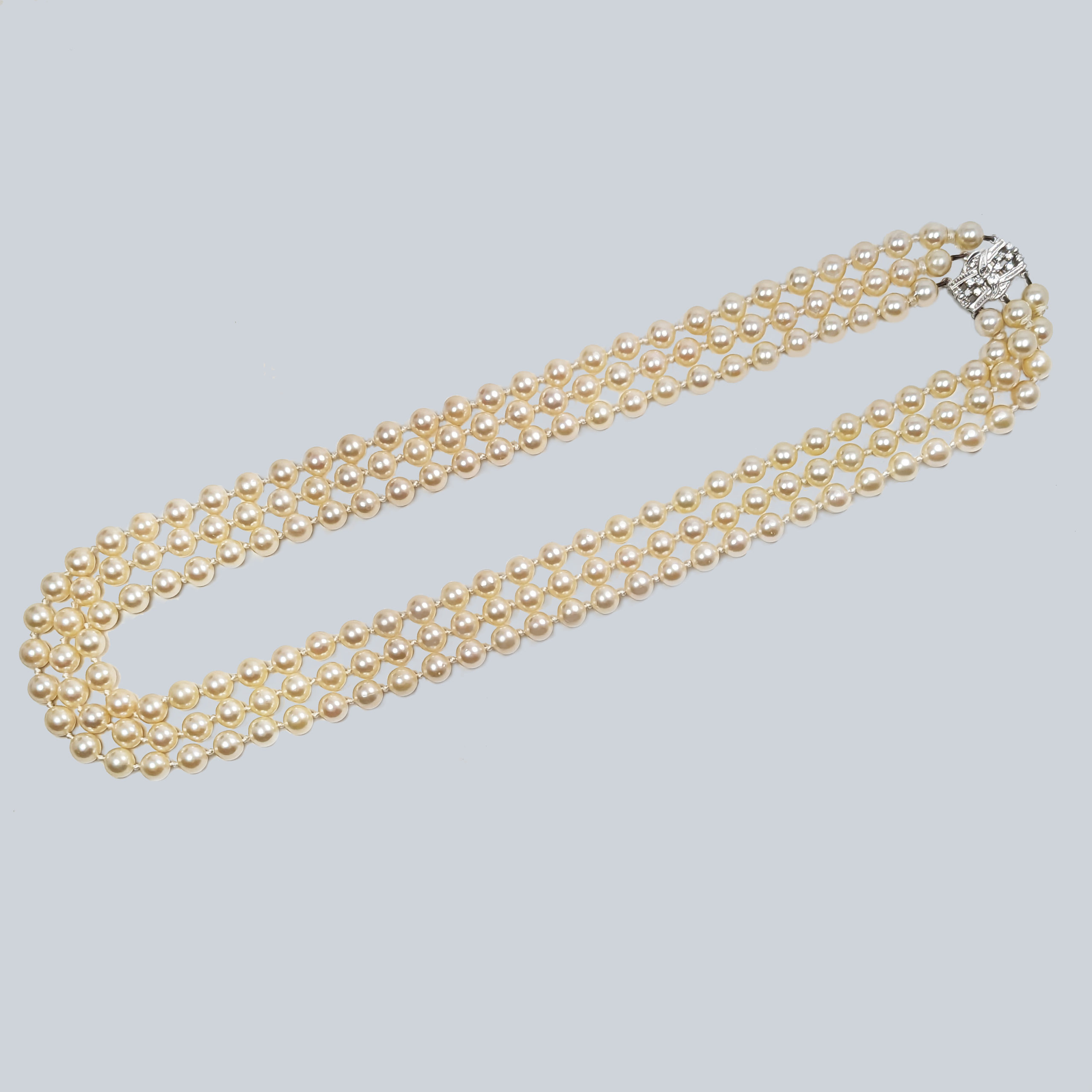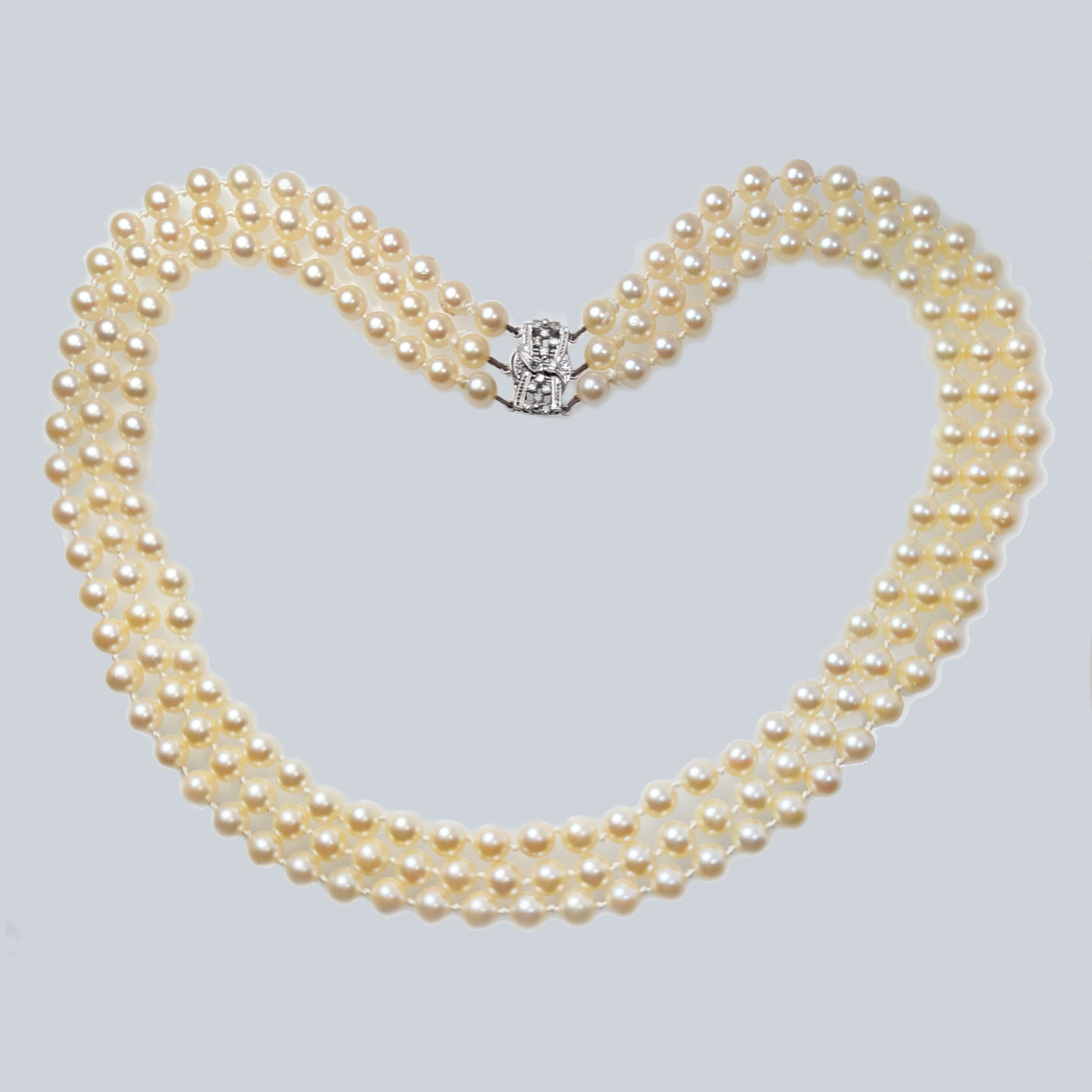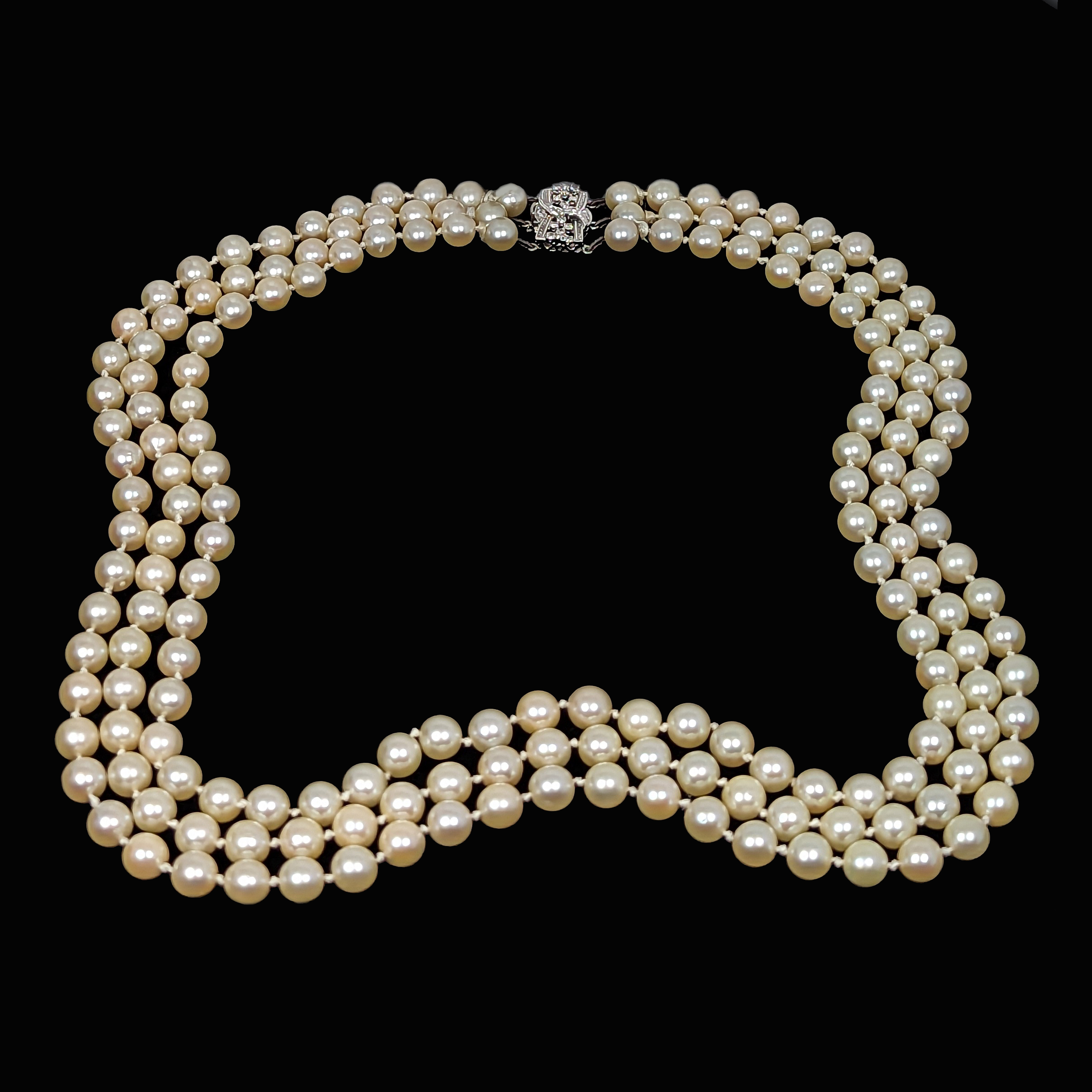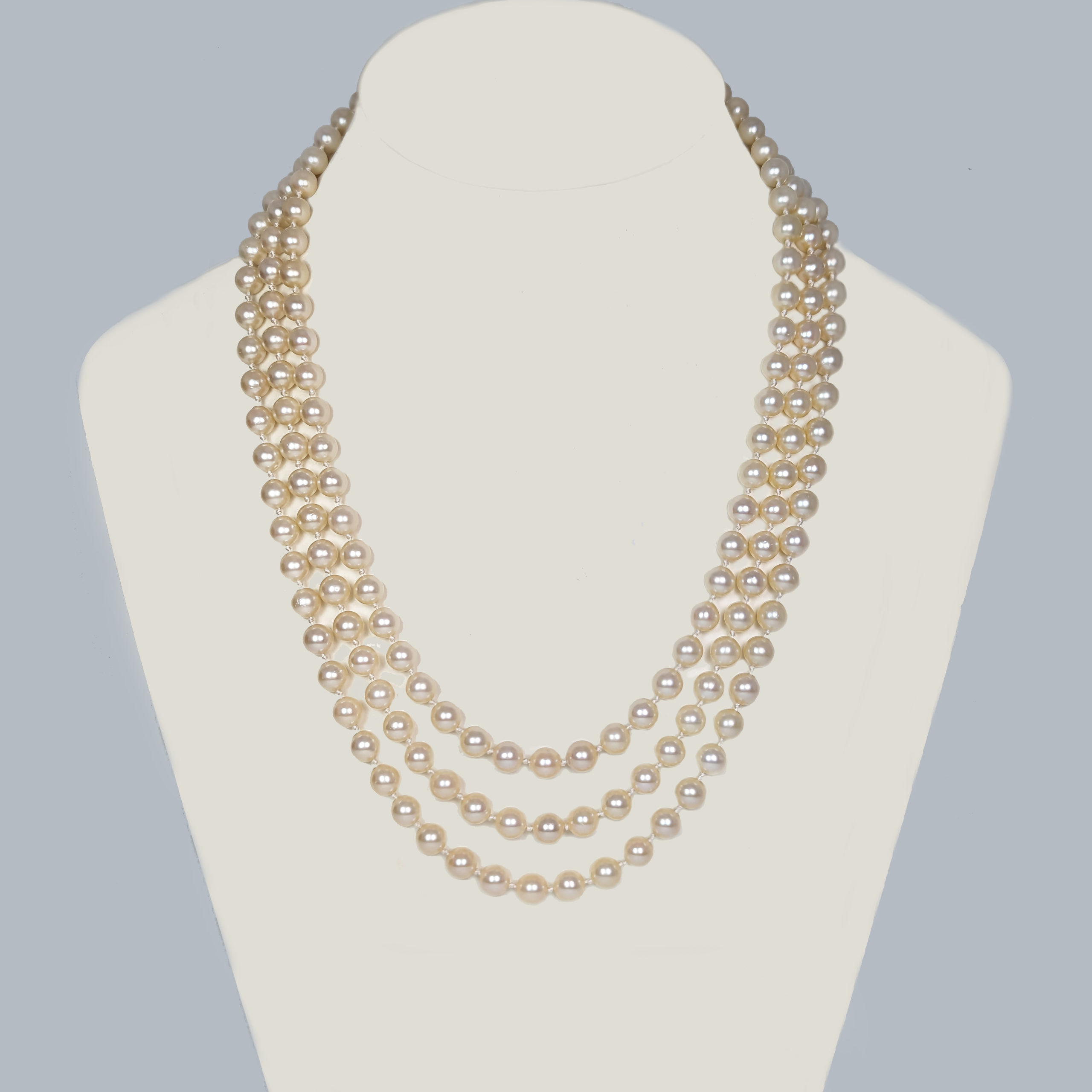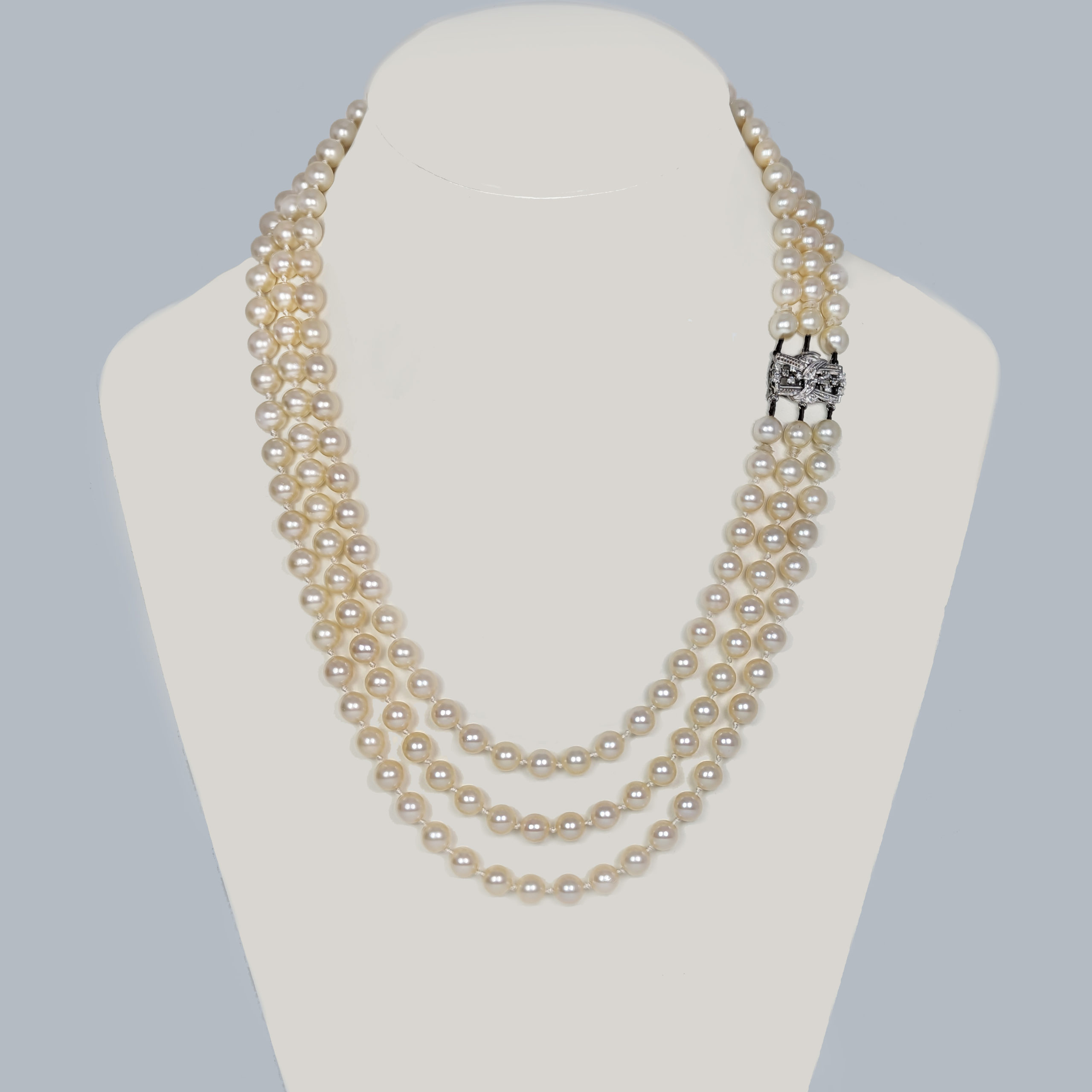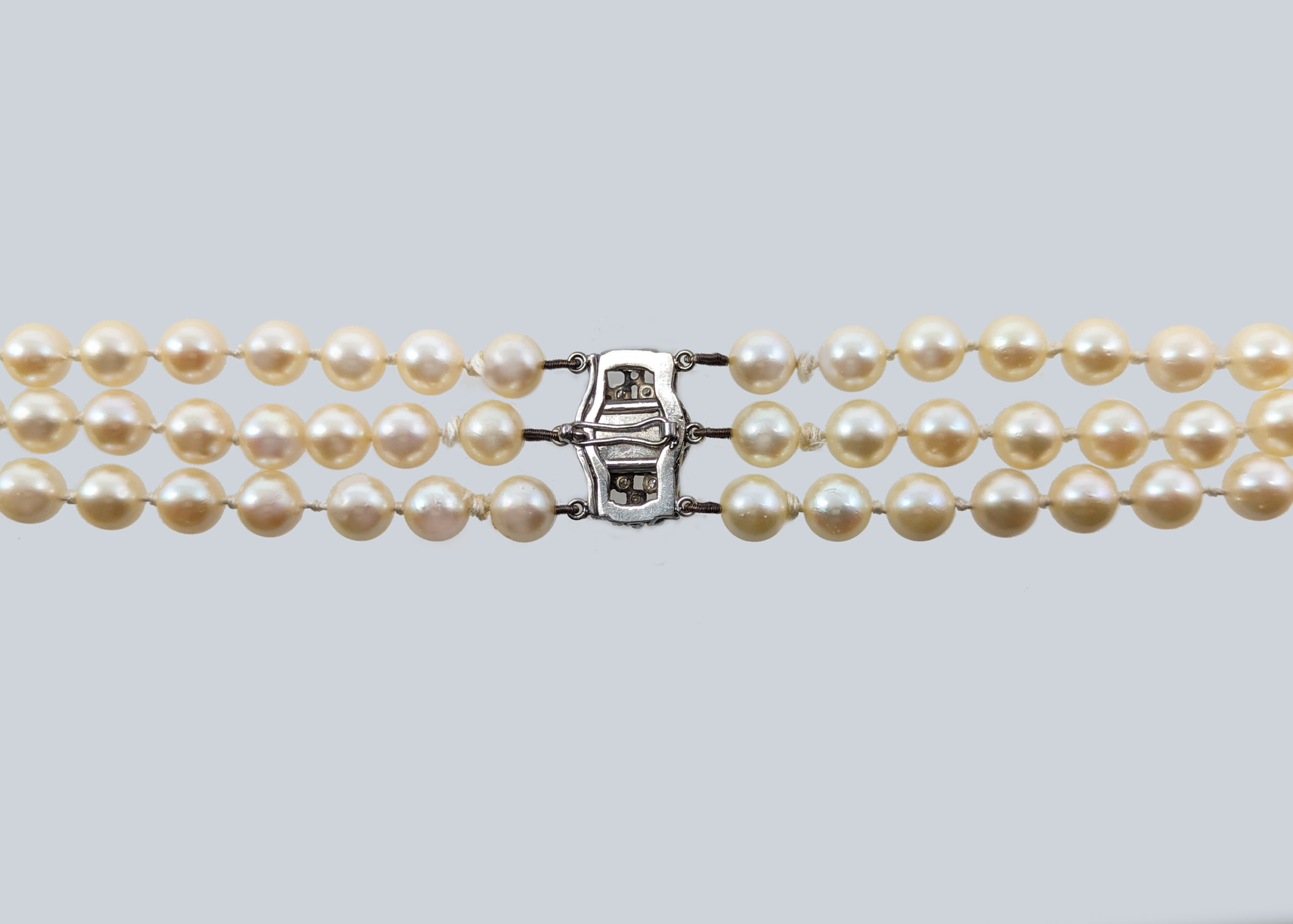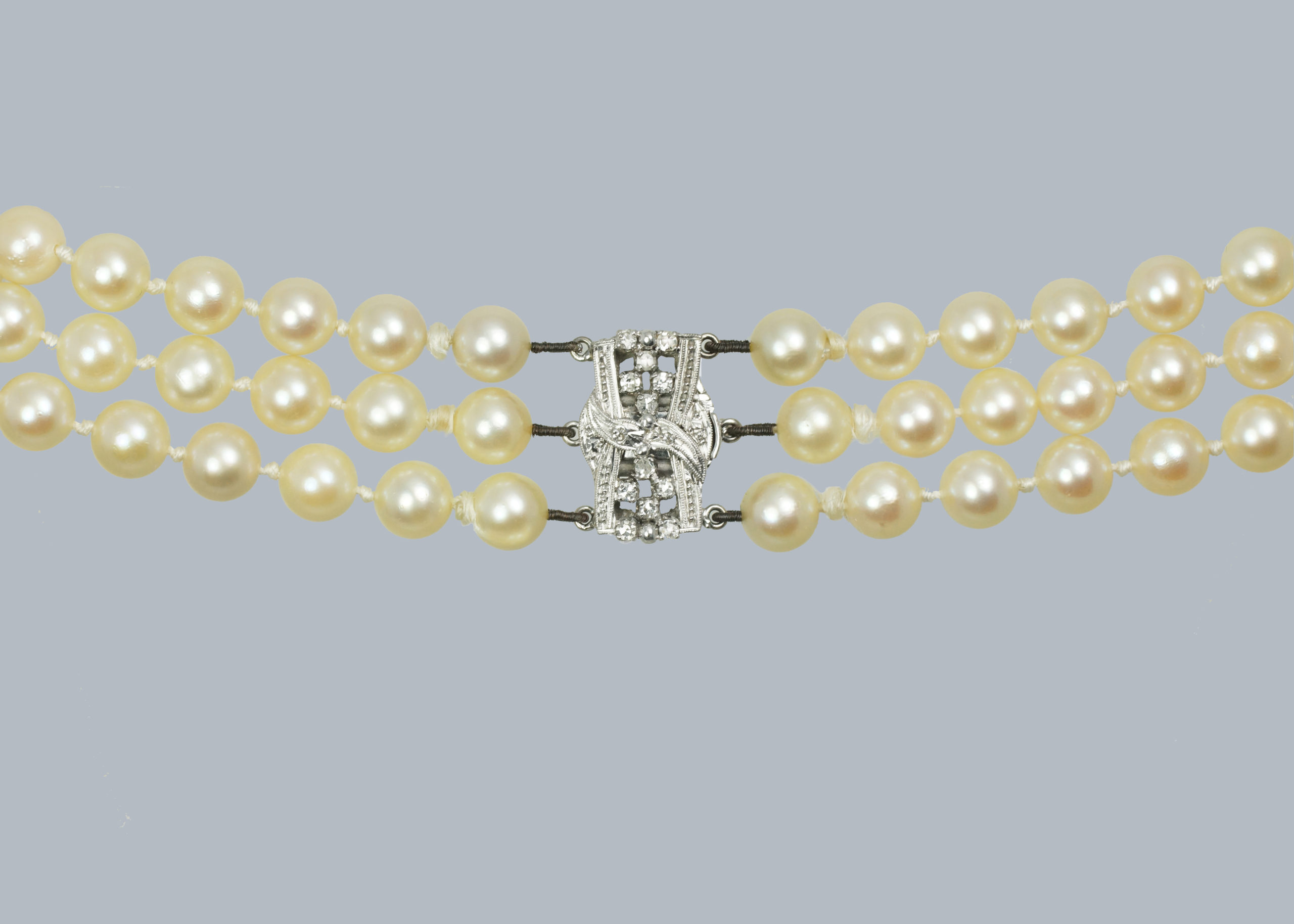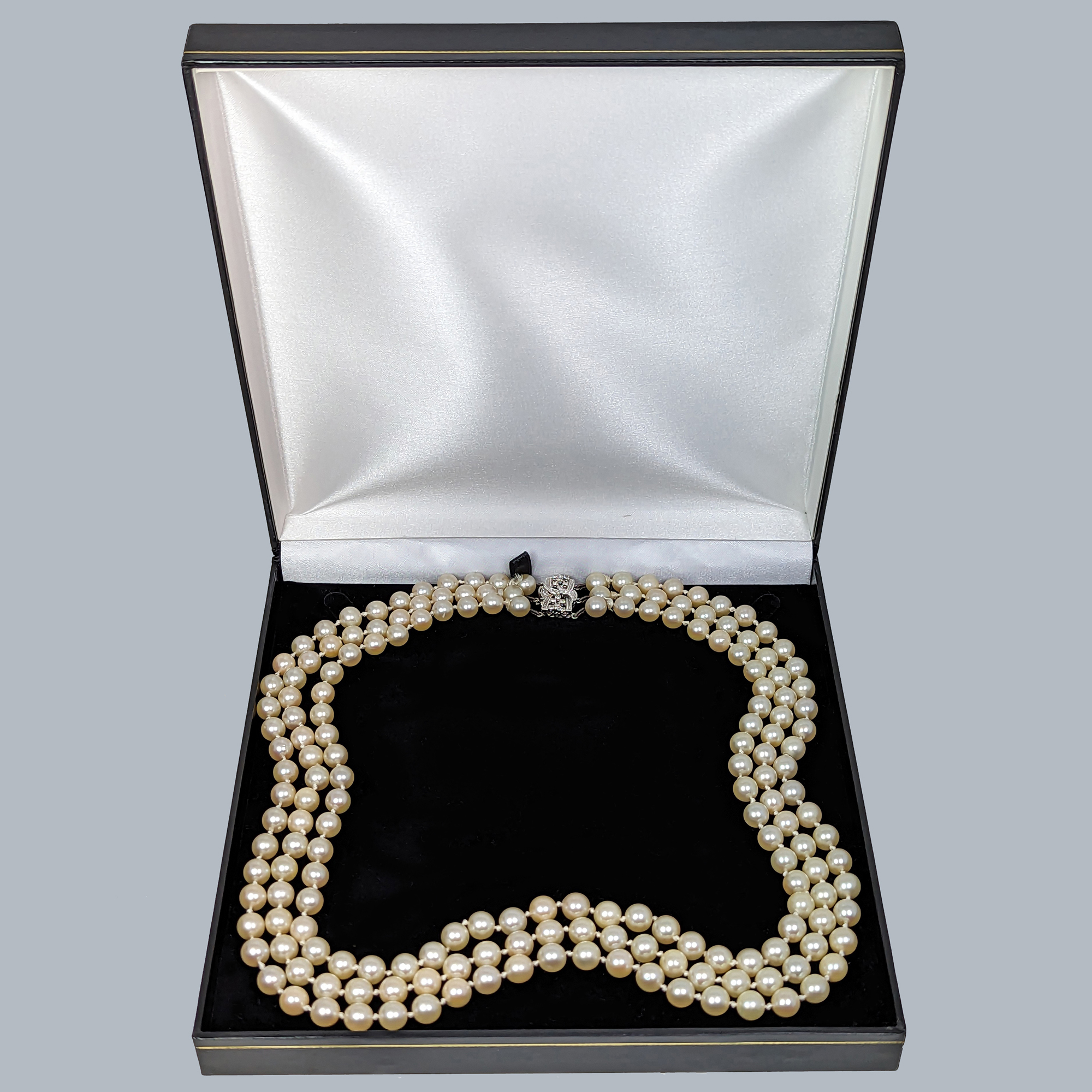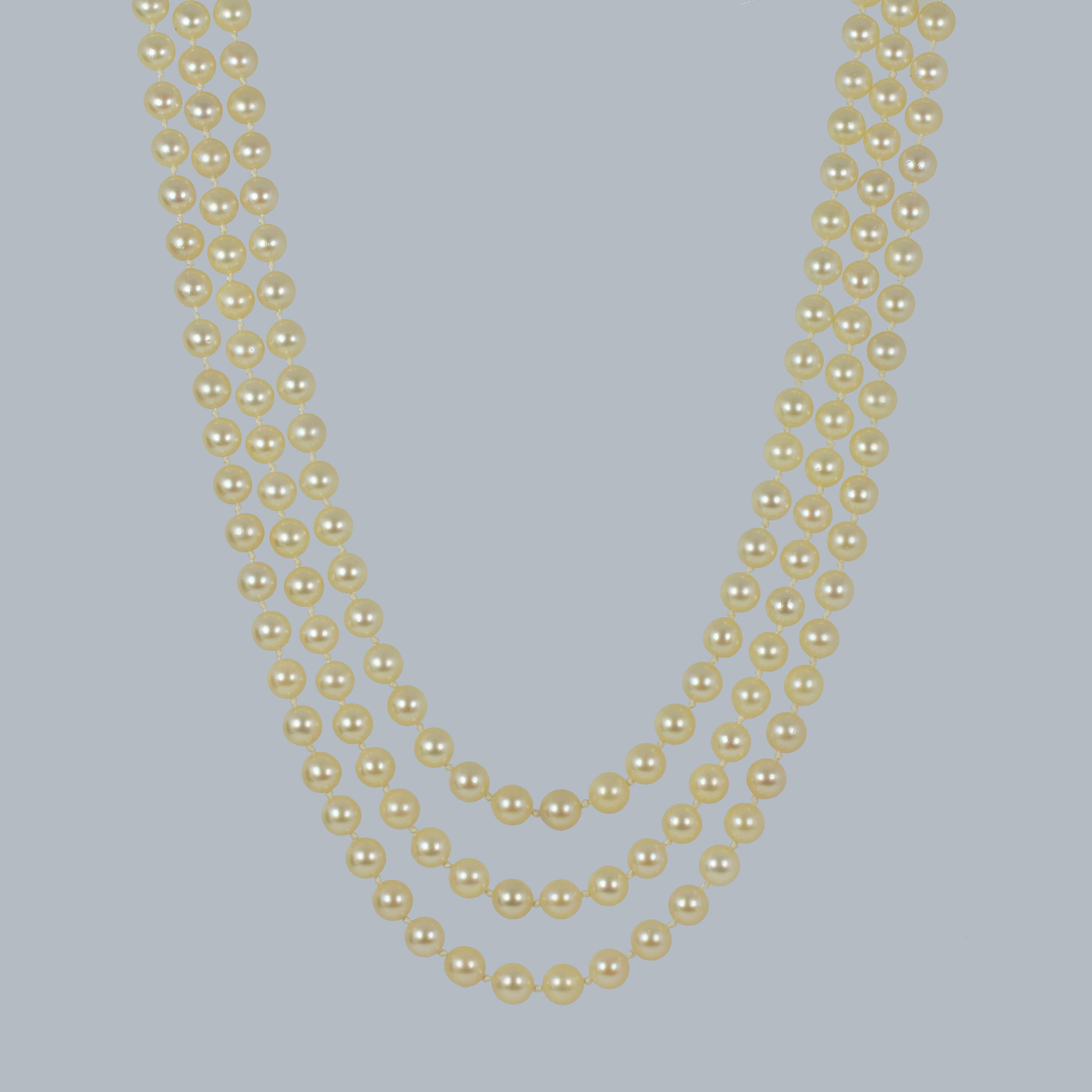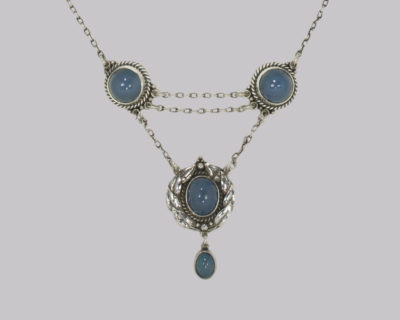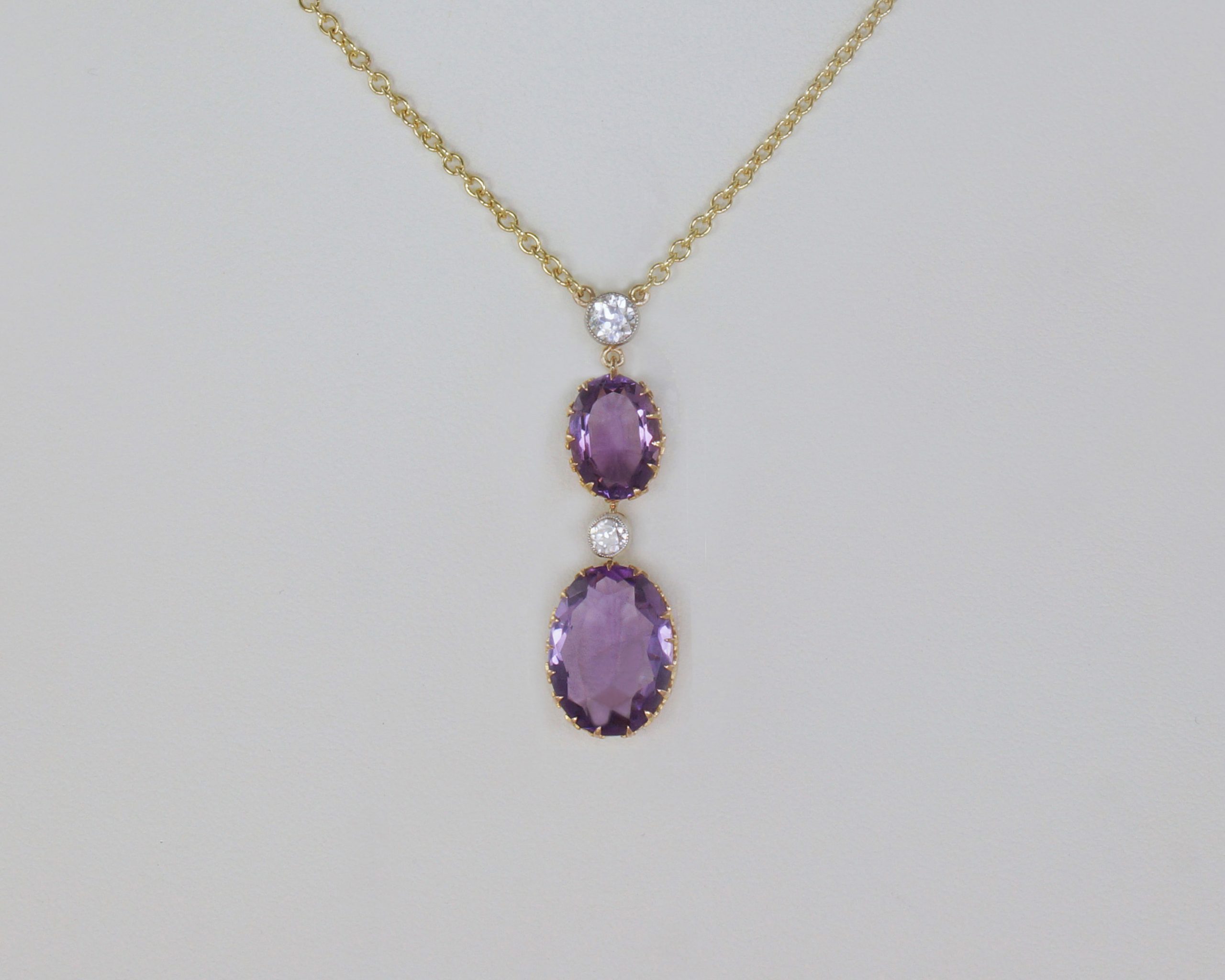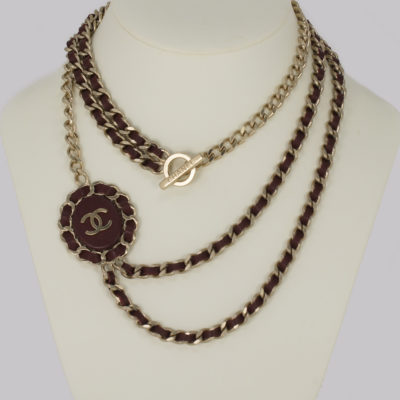Description
Splendid 1930s vintage deco Pearl necklace with diamond clasp
This triple strand pearl necklace has a fabulous diamond clasp
The gorgeous high quality pearls are an ivory creamy colour with pink overtones and a deep lustre.
This beautiful necklace looks stunning when worn
- Length of strands 64cm (25″), 60cm (23.5″) and 56 cm (22″)
- Diamonds 12 x approx. 2mm
- Circa 0.40 carat. Colour G Clarity VSI
- 186 Cultured pearls approx. 8mm
- Push clasp with safety catch 20mm x 14mm
- Clasp tests 18ct gold
- Necklace weighs an impressive 123 grams
- It dates to the1930s
- The necklace is in excellent condition.
- Pearls are smooth and even coloured (difficult to show in photos)
- This fabulous vintage art deco pearl necklace comes in the presentation box illustrated
- Our ref : 23158
Click here to see more beautiful vintage necklaces
Pearls, amber and coral are precious gems produced by plants and animals. These gems are adored because they are so attractive and rare and have thus been worn as jewellery for thousands of years. The most highly prized and the most expensive of this group are the fabulous and amazing pearls, they have one unique quality, which is, they can be worn by anyone, at any time, in any situation!
Factors affecting the price of pearls.
Pearl types, Lustre, thickness of nacre, colour, shape, size, surface quality, treatment status. The most expensive type of pearl is the natural pearl, these were the only type available until about 1900, when Mikimoto started to produce cultured pearls. Cultured pearls are from farmed oysters, whereas natural pearls come from “wild” oysters. Also, we have sea water pearls from the oceans and freshwater pearls from the rivers and streams. Seed pearls were very small pearls used extensively in Victorian jewellery. Artificial pearls are made from many materials often coloured glass.
Pearls are traditionally the birthstone for June.
Care of your vintage-antique pearls.
Pearls are delicate and can easily be damaged, pearl is just 2.5 on the Mohs hardness scale. They should be wrapped in silk cloth so that they do not dry out, or become scratched by other hard objects or jewellery.
Pearls absorb oils from your skin and it keeps them looking Bright, New and Lustrous! Otherwise, Pearls will Dry Out and turn an ugly yellow hue!
Also, pearls are not resistant to sprays and perfumes.


